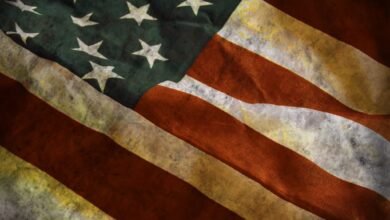Political Parties: Resources for Government & History Teachers

Amanda Bryan excepted today’s blog from our Core Documents volume, Political Parties, edited by Eric Sands. Download the volume in our bookstore today.
Political parties have a long and often convoluted history in American politics. . . . To the Founders, parties were factions that threatened to divide the nation into competing groups that, at the worst, could turn to violence to advance their interests. The Founders also feared that parties would disrupt the separation of powers. This would be especially true in the case of unified government where loyalty to party might come to interfere with the system of checks and balances. Finally, the Founders worried that political parties might stand in the way of effective representation. Elected officials with party affiliations might be tempted to represent only those of their own political party and leave party opponents without a voice. Given these concerns, it is little wonder that the Founders did not want parties participating in American government.
Yet within ten years of ratification of the Constitution, political parties were alive and well in American politics. . . . This leads to an interesting conundrum—how did the political system become partisan within such a short time after the formation of a government designed to avoid reliance on political parties? Probably the leading answer to this question is that parties were understood as being inevitable. More precisely, republican government does not work well without being buttressed by political parties. Parties have proven to be instruments through which voters can make choices about the policy direction of the country. Parties allow minorities to form coalitions to create majority rule, even if that rule is not always harmonious or stable. Parties help build support for officeholders and serve as conduits of communication to the masses and vice versa. Parties serve as schools of democracy where citizens learn to associate and become attached to governing institutions. Finally, parties mobilize voters and encourage voter participation at all levels of democratic politics.
The following documents tell the story of the changes of the party systems throughout American history.
1790s
1800 – 1820s
1820s – 1854
1854 – Reconstruction
Reconstruction – 1900
1890s – 1932
1932 – 1980
1980 – present
In reviewing these documents, what becomes clear is that political parties in the twenty-first century bear scant resemblance to their predecessors in the eighteenth, nineteenth, or twentieth centuries, and the chances of returning to an earlier era of party governance seems remote. Yet contemporary problems like voter alienation, low voter participation rates, government gridlock, and low popular trust in government may all have their roots in the weakening of political parties. Parties have traditionally been laboratories where people develop the habits of associating with others, the techniques of accommodation, and attachment to government institutions. What parties need is a sense of public purpose, but it is unlikely that this purpose is going to come from the parties themselves. Instead, the parties need strong leadership that can infuse public purpose into the parties and lead them to restored prominence and relevance in American politics. American parties are far from perfect, but they may be needed now more than ever to restore American politics from the twin dangers of cynicism and indifference. Given the traditional roles of parties, we must think seriously about whether a rejuvenation of the parties might be an elixir for our contemporary ills.






